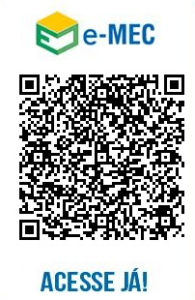


Responsible researcher: Eduarda Figueiredo
Original title: Is the Cure Worse than the Disease? Unintended Effects of Payment Reform in a Quantity-Based Transfer Program
Author: Katherine Meckel
Intervention Location: Texas
Sample Size: 11.424
Sector: Public Policy
Variable of Main Interest: Effect of EBT (voucher card)
Type of Intervention: Quantity Vouchers
Methodology: Diff-in-Diff
Summary
Quantity vouchers , which provide fixed quantities of certain products, used by many anti-poverty programs in the United States. Before the implementation of card technology to use these programs, paper vouchers were used, which opened the door to several illegal practices from the point of view of the program's rules, such as price discrimination. This study sought to analyze the effect of implementing this technology on price discrimination and participants' well-being. The results, carried out through difference-in-differences modeling, suggest ambiguous effects.
Many anti-poverty programs in the United States provide benefits instead of money. Within them we have the supplies of value vouchers , which work like money that can only be spent on certain goods. Other programs provide quantity vouchers , which grant fixed quantities of certain products (Currie and Gahvari, 2008; Hoynes and Schanzebach, 2015).
Quantity vouchers can be used to more effectively change beneficiaries' consumption patterns and to keep the real value of benefits fixed, which is useful when local price variation is not observed (Bronchetti, Christensen, and Hoynes, 2019 ). However, participants become less sensitive in terms of price changes, which encourages participating companies to increase their prices and, consequently, increasing the program's tax burden.
quantity voucher tradeoffs , this article reviews the effects of a wage reform in the Special Supplemental Nutrition Program for Women, Infants, and Children (WIC) [1] in Texas. To this end, the author generated three predictions about the effects of implementing Electronic Benefits Transfer (EBT) [2] :
Based on these predictions, the overall effect of EBT on social well-being is analyzed.
WIC is a federal assistance program that provides low-income pregnant and breastfeeding women and children under age 5 with a monthly transfer of specified amounts of nutritious foods, as shown in Table 1. To be eligible, families must earn less 185% of the federal poverty level [3] or qualify for Medicaid [4] and be considered “nutritionally at risk.”
Participants receive quantity vouchers that can be redeemed at participating supermarkets. Additionally, WIC provides participants with health screenings, nutrition classes, and referrals to other social services. Literature has found that WIC improves infant health, maternal health, breastfeeding, and access to other social services (Bitler and Currie, 2005; Rossin-Slater, 2013).
Table 1: Standard Benefits Packages (WIC), Texas

Source: Meckel (2020).
Before payments reform, WIC participants used paper vouchers to purchase benefits. WIC stores recorded benefit prices on vouchers and then sent them for reimbursement. Thus, WIC stores are incentivized to charge WIC customers higher prices than they charge non-WIC customers because customer billing technologies are separate between the two groups. Price discrimination is prohibited by program rules, but government reports conclude that it occurs, particularly in smaller stores (Government Accountability Office, 1999; Saitone, Sexton, and Volpe, 2015).
After the reform, vouchers become a plastic smart card that authorizes WIC transactions at the supermarket checkout, the Electronic Benefits Transfer (EBT). EBT integrates price collection technology into the store's own electronic cash register, so EBT allows the government to directly observe a store's prices, forcing prices to be the same for WIC and non-WIC customers.
EBT was introduced in different groups of counties at different dates during the years 2005-2009.
Data on all food providers to WIC beneficiaries during the years 2007 to 2010 from the Texas Department of Health Services were used [5] . For each fiscal year, data includes supplier name and address, supplier type, whether the supplier was new to WIC, total months of participation, and information about monitoring activities. The author limits the sample only to grocery store-type suppliers, which is equivalent to 95.5% of the stores in the sample. The other types of grocery stores were used as placebos.
To assess the causal effects of the shift from paper vouchers to EBT, variation in the exact timing of EBT implementation across Texas counties was explored using a Differences in Differences model. Comparing the results of stores and participants before and after the change. Therefore, the variable of primary interest here is the effect of EBT on fiscal year, month, and geographic unit.
Price discrimination investigations completed after sanctioned EBT were just 3.4%. Previously, with paper vouchers, 13% of investigations resulted in some sanction for price discrimination. Therefore, the results are consistent with the idea that EBT eliminates price discrimination.
The results also suggest a reduction in independent WIC stores per county of 0.11 following EBT implementation. For chain stores, there is also a reduction, but much smaller, of 0.06, which is not significant.
Regarding the location of WIC stores, the results of the study demonstrated that for independent WIC stores the effect is imprecise. However, for chain stores there is a 10 percentage point increase in the probability of abandoning a WIC store present in a location with a higher poverty rate. Therefore, this evidence suggests that zip code poverty explains an important part of the variation in dropout behavior between chain WIC stores and independent WIC stores.
The effect of EBT on prices paid by non-WIC customers shows that independent WIC stores have an increase in the price of WIC products by 6.44%. For chain WIC stores, the effect on prices is small (0.10%) and not significant. These results support the author's hypothesis that WIC stores that were price discriminating before EBT should increase prices for WIC products, including for non-WIC customers.
The effects of EBT on well-being are ambiguous. They depend on the surplus associated with an additional family participating in WIC, the level of the price discrimination margin, and the basis on which the margin is applied.
Quantity-based vouchers offer participants the same quantities of program products regardless of price, making them price inelastic. The new technology, which switches from paper vouchers to a card, seeks to reduce price discrimination between supermarkets participating in WIC. Therefore, the results suggest that the implementation of EBT was successful in reducing price discrimination, but also increased abandonment of stores in the program. Therefore, an ambiguous effect.
References
Bitler, Marianne P., and Janet Currie. 2005. “Does WIC Work? The Effects of WIC on Pregnancy and Birth Outcomes.” Journal of Policy Analysis and Management 24 (1): 73–91.
Bronchetti, Erin T., Garret S. Christensen, and Hilary W. Hoynes. 2019. “Local Food Prices, SNAP Purchasing Power, and Child Health.” Journal of Health Economics 68: 102231. https://www.sciencedirect.com/science/article/abs/pii/S0167629619304151 .
Currie, Janet, and Firouz Gahvari. 2008. “Transfers in Cash and In-Kind: Theory Meets the Data.” Journal of Economic Literature 46 (2): 333–83.
Government Accountability Office. 1999. Efforts to Control Fraud and Abuse in the WIC Program Can Be Strengthened. Washington, DC: Report to Congressional Committee GAO-RCED-99D224GAO.
Hoynes, Hilary, and Diane Whitmore Schanzenbach. 2015. “US Food and Nutrition Programs.” In Economics of Means-Tested Transfer Programs in the United States , Vol. 1, edited by Robert A. Moffitt, 219–301. Chicago: University of Chicago Press.
Rossin-Slater, Maya. 2013. “WIC in Your Neighborhood: New Evidence on the Impacts of Geographic Access to Clinics.” Journal of Public Economics 102(C): 51–69.
Saitone, Tina L., Richard J. Sexton, and Richard J. Volpe. 2015. “A Wicked Problem? Cost Containment in the Women, Infants and Children Program.” Applied Economic Perspectives and Policy 37 (3): 378–402.
[1] Special Supplemental Nutrition Program for Women, Infants and Children (WIC).
[2] Electronic Benefit Transfer (EBT).
[3] In 2020, the year of the study, the federal poverty level was $47,638 for a family of four.
[4] Medicaid is an American national health security program for low-income people. For more information: https://www.medicaid.gov/ . Accessed on May 13, 2024.
[5] Texas Department of State Health Services (Texas DSHS).